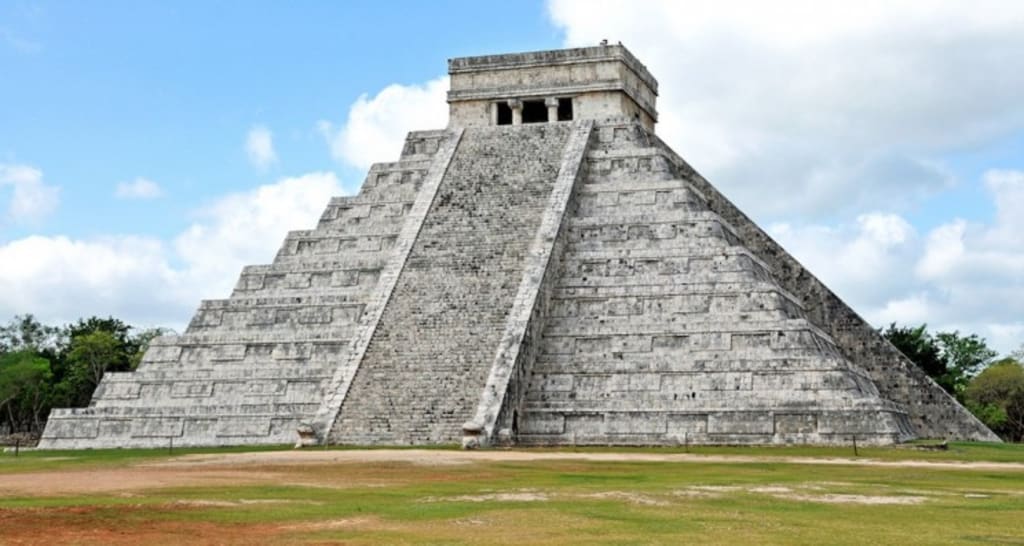Unveiling the Mayan Mysteries: Time, Astronomy, and Technological Marvels
Cracking the Code of the Mayan Calendar: Discovering Ancient Wisdom and Ingenious Innovations

Do you know today's date? It's as simple as looking at your smartphone to instantly know the day, month, and year. But was it always this easy to determine the date? Did ancient civilizations even have the concept of a 365-day year? The Mayan people had calendars that were similar to our concept of a year, but their cycles were much longer, spanning 819 days. This created a mystery: when did their calendar start and end? Scientists pondered this question for many years until two American researchers, John Linden and Victoria Bricker, made a breakthrough in the 1940s. They expanded the Mayan calendar from 819 days to a full 45 years, revealing a pattern.
This discovery was significant because the Maya measured time in a complex way, using glyphs instead of the Arabic numerals we use today. Glyphs were small images representing characters, much like the icons on your computer desktop or universal symbols. For example, a dot with three curved lines above it represented an available Wi-Fi network. In the Mayan calendar, glyphs were used to represent animals or natural phenomena, such as the jaguar or eagle. Each glyph marked a day, and the cycle repeated four times, forming blocks. The Maya assigned different colors to each block, which scientists initially believed corresponded to the four cardinal directions: red for East, white for North, black for West, and yellow for South. However, in the 1980s, researchers discovered that the colors actually represented the position of the sun in the sky. Yellow indicated the zenith, the highest point of the sun, while white represented the nadir, the lowest point.
The Mayan calendar's connection to astronomy became evident at Chichen Itza, a prominent Mayan city in Mexico's Yucatan Peninsula. There, a step pyramid dedicated to the Feathered Serpent deity stood in perfect alignment. Twice a year, during the equinoxes in March and September, the sun shone directly over the equator, resulting in equal day and night durations. At this pyramid, sunlight illuminated a sculpture of a serpent head at the base, and as the sun moved, it created an illusion of a snake slithering down the pyramid's 91 steps. This spectacle continues to attract visitors today, but it must have been even more awe-inspiring when the Mayans completed the structure between 1050 and 1300 CE.
The Mayan astronomers were also keen observers of synodic periods, which are the intervals between a stellar body's complete laps. For instance, the synodic period between two full moons lasts approximately 30 days when observed from Earth. The Mayans meticulously recorded the synodic periods of various planets, including Venus and Saturn. The American researchers discovered a significant connection between the Mayan calendar and these synodic periods. Taking the planet closest to the Sun, Mercury, as an example, its synodic period is 117 days. When multiplied by seven, the result is 819, the same number as the Mayan cycle. The synodic periods of other planets also neatly aligned with this magical figure. However, this pattern only became apparent after expanding the Mayan calculation to include all the planets.
This brings us to the year 2012. You might recall the false rumor that the world would end on December 21st, 2012, based on the Mayan calendar. In reality, this date marked the end of a Mayan cycle known as The Long Count. It was equivalent to our New Year's Eve, signifying the end of a cycle in their time measurement. So, there was no need to panic—the world didn't end on January 1st.
The Mayans had more achievements beyond their calendar. They were skilled in working with rubber, long before Charles Goodyear, an American inventor, discovered its uses. The Mayans extracted natural latex from rubber trees and produced various grades of rubber. While they didn't make car tires, they likely made rubber balls from latex, ranging in size from a softball to a soccer ball. These balls were used in Mayan ball games, which were quite different from basketball. The Mayans set their hoops on walls that were 23 feet high, as opposed to the NBA's 10-foot standard, and the hoop was inverted.
Additionally, the Mayans enjoyed chocolate, although not in the form of bars as we know it today. They drank it by smashing cocoa beans and perfecting the mixture over time. The Mayans used cocoa beans as currency and added spices to enhance the flavor. Their word for chocolate, "sokolatal," likely gave rise to the modern term. Clean water for their cocoa drinks was obtained through sophisticated rainwater collection systems. The Mayan engineers carved large reservoirs in limestone bedrock, lined them with a watertight material, and created channels to collect rainwater from the hills. One reservoir alone could hold around 10,000 gallons, enough to fill 55 modern hot tubs.
In conclusion, the Mayan civilization possessed a remarkable understanding of time, astronomy, and technological advancements. Their calendar, with its intricate cycles and glyph representations, demonstrates their sophisticated system of tracking days. The alignment of their structures with celestial events, such as the equinoxes, showcases their astronomical knowledge and architectural prowess. Furthermore, the Mayans' innovative use of rubber, their enjoyment of chocolate, and their impressive water filtration systems highlight their ingenuity and resourcefulness. The Mayans were a highly advanced ancient civilization that made significant contributions to various fields, leaving behind a rich legacy that continues to captivate and inspire us today.





Comments
Mela Mandigma is not accepting comments at the moment
Want to show your support? Send them a one-off tip.